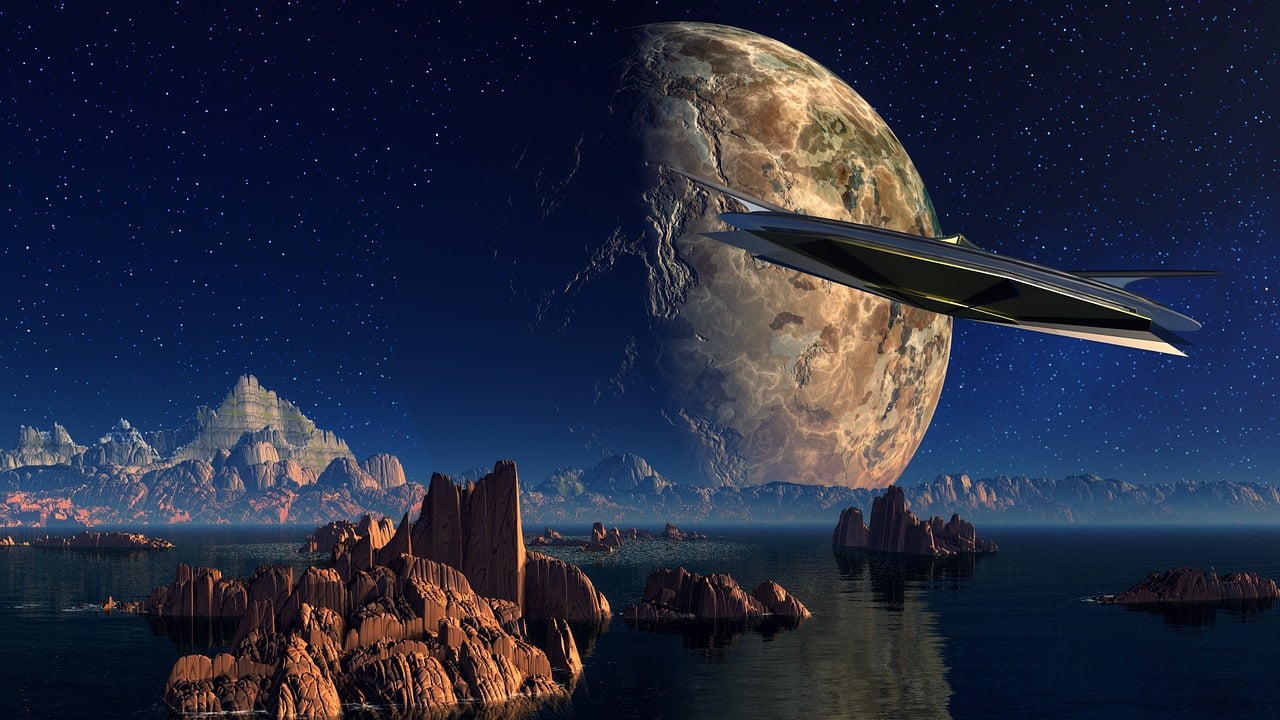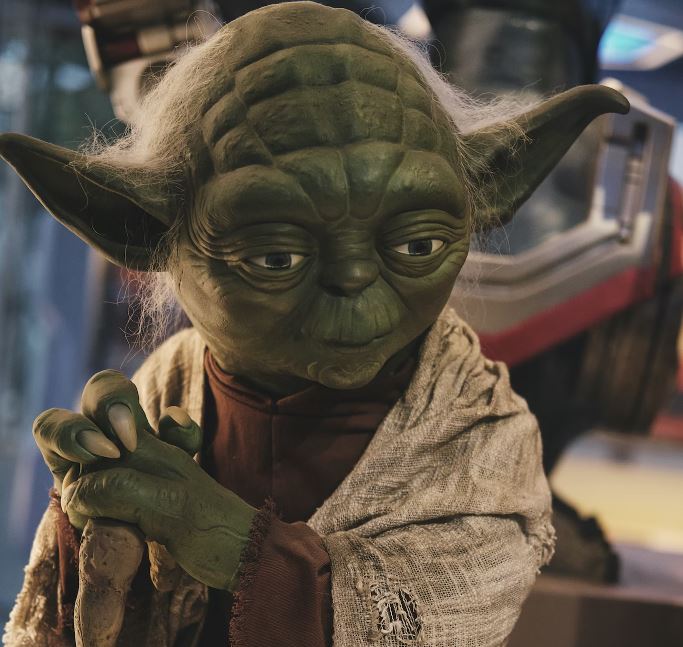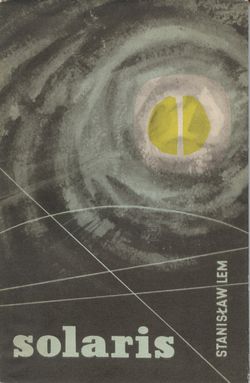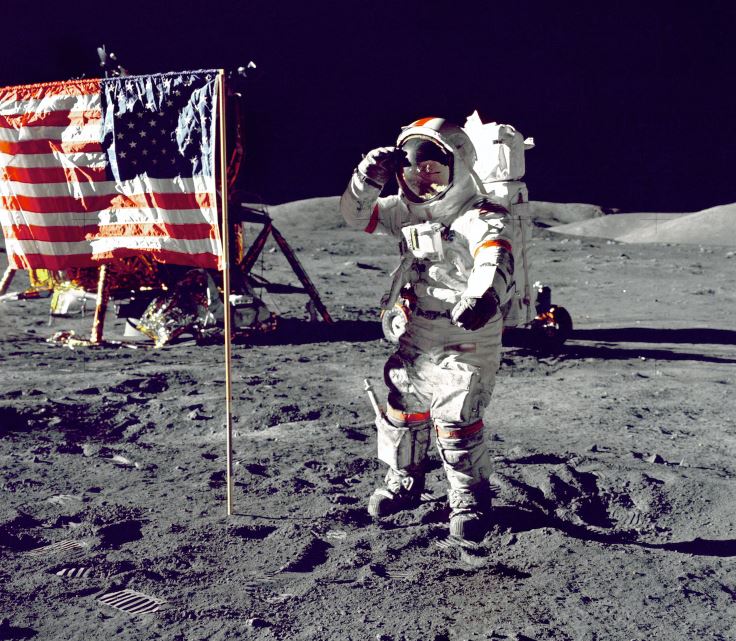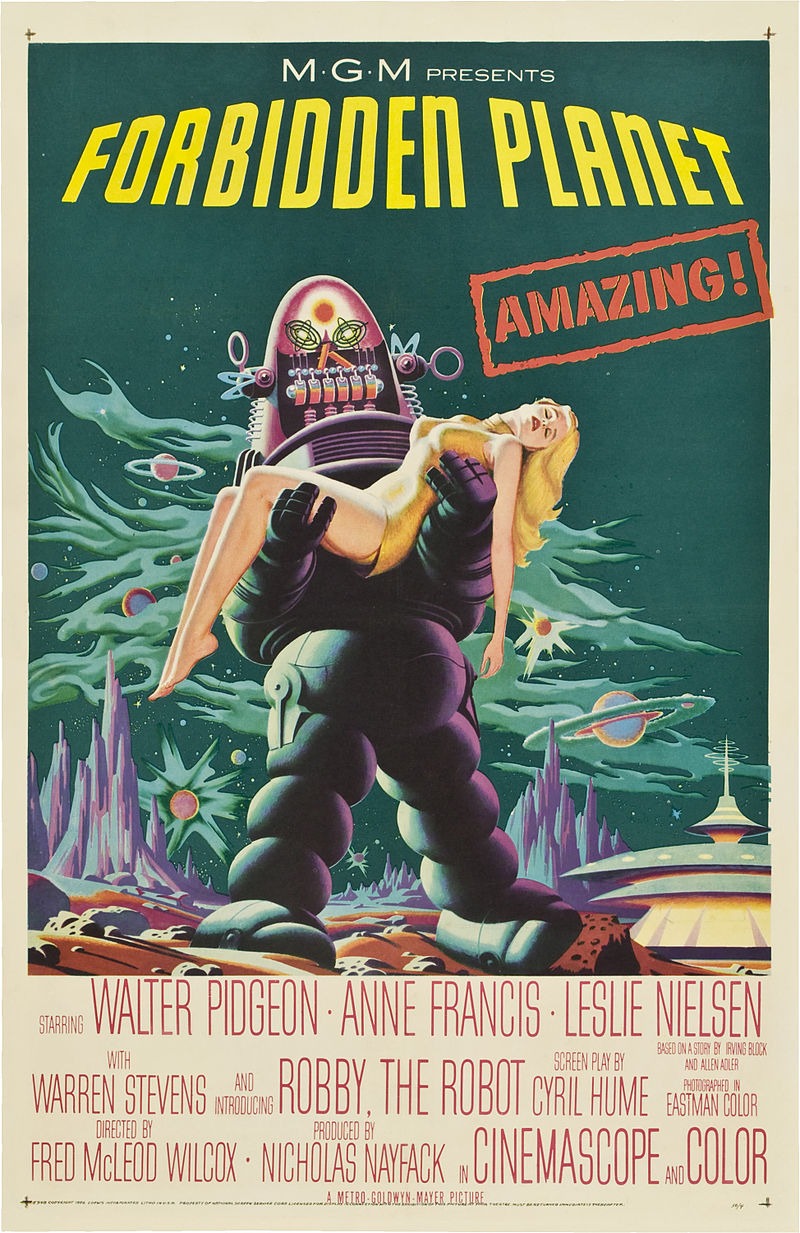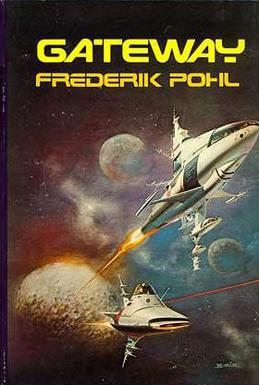Background
The human race has long been fascinated by space exploration. We have been fascinated and curious by the stars since the beginning of human civilization. Even while space exploration in the actual world has come a long way, the most daring and creative depictions of intergalactic travel may be found in science fiction. Not only have iconic works of science fiction kept us entertained, but they have also significantly influenced how we see space travel. In this study of science fiction with a space travel theme, we will examine ten notable films and novels and analyze how they have shaped our perception of the universe.
“The Martian” (2015): Survival and Ingenuity on Mars
The thrilling tale of astronaut Mark Watney, abandoned alone on Mars, and his tremendous struggle for survival is told in Andy Weir’s 2011 book “The Martian” and its 2015 film version, which was helmed by Ridley Scott. Its rigorous focus on scientific accuracy is what distinguishes “The Martian” from other films.
Based on true scientific concepts, the story centers around the difficulties Watney experienced in producing food, water, and electricity. Our understanding of space travel has been transformed so that it is no longer only an adventure but also a monument to human resiliency and inventiveness thanks to the work of Weir and Scott.
In addition to providing entertainment, “The Martian” sparked a resurgence of interest in space travel and the possibility of sending people to Mars. It emphasized the value of thorough scientific planning and problem-solving for traveling beyond of Earth.
“Star Wars” (1977): A Galaxy of Adventure and Imagination
The “Star Wars” series, which George Lucas launched in 1977 with the release of the first movie, has influenced science fiction movies ever since. Even though “Star Wars” is frequently linked with lightsabers and grand space battles, it has had a significant impact on how we view space travel.
In essence, “Star Wars” depicts a wonderfully varied cosmos alive with various races, planets, and technological advancements. The Death Star, X-wing starfighters, and Millennium Falcon have all come to represent space technology. Our picture of space flight as adventurous, magical, and full of limitless possibilities has been significantly shaped by the franchise.
The heroic journeys of individuals and their contributions to determining the fate of the galaxy have been stressed in “Star Wars.” It explores themes of good vs evil, the struggle for freedom, and the notion that anyone can make a difference, regardless of background. Audiences have responded strongly to this story of space travel as the setting for heroic journeys and moral quandaries, which has contributed to the franchise’s lasting success.
“Hyperion” (1989): Philosophical Depth in Space Exploration
The “Hyperion Cantos” series’ debut novel, “Hyperion,” by Dan Simmons, was published in 1989 and is renowned for its complex plotting and innovative space travel. The story of seven pilgrims traveling across a far-off cosmos is interwoven with their own accounts of their experiences in the novel.
The ability of “Hyperion” to address difficult existential and philosophical issues within the context of space travel sets it distinct from other space operas. The book invites readers to reflect on the deep mysticism and complexity of the cosmos. It serves as a reminder that space exploration is about more than just technology and adventure—it’s also about the big issues about life and the limits of what humans can understand.
“Solaris” (1961): A Journey into the Human Psyche
A unique investigation of the psychological difficulties of space exploration can be found in Stanislaw Lem’s 1961 novel “Solaris,” which has been made into numerous motion pictures, notably Andrei Tarkovsky’s 1972 version and Steven Soderbergh’s 2002 adaptation. The novel takes place aboard a space station orbiting the enigmatic planet Solaris, which causes the crew members’ unconscious thoughts and memories to take on concrete and frequently disturbing forms.
“Solaris” is a piece of literature that explores the psychological challenges and emotional costs of extended space flight. By putting a focus on the psychological aspects of the journey, it challenges the way we think about space exploration. The characters’ haunting and unsolved troubles are metaphorically represented by the alien manifestations on Solaris.
The psychological effects of space travel are examined from an original angle in this book and the ensuing movies, which emphasize the psychological, existential, and emotional toll that exploring the cosmos can have on people. The film “Solaris” serves as a reminder that human experience is a crucial component of any space exploration activity, impacting how we perceive the psychological difficulties of lengthy journeys.
“Starship Troopers” (1997): Military Exploration in Space
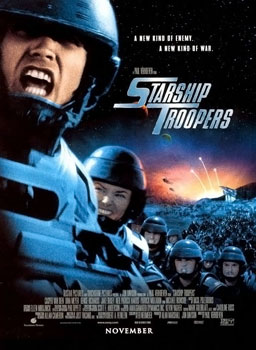
The 1959 novel “Starship Troopers” by Robert A. Heinlein and its 1997 film adaptation by Paul Verhoeven take a different look at space exploration from the military perspective. The plot follows Johnny Rico, a teenage soldier who joins the Mobile Infantry to fight against alien creatures known as the Arachnids in a future in which Earth is a member of a global government.
The movie “Starship Troopers” examines civic responsibility, responsibilities, and the costs associated with defending humanity. It depicts a picture of space travel as a military operation, with powered armor suits for the warriors, who then engage in bloody combat on other planets.
Although “Starship Troopers” is frequently attacked for what critics see as its celebration of militarism, it has shaped how we view space travel by posing issues with the military’s place in interstellar exploration and the morality of war in space. It forces us to think about the intricate relationships between military might and space exploration.
“Guardians of the Galaxy” (2014 Space as a Playground for Epic Adventures
The 2014 movie “Guardians of the Galaxy” by James Gunn depicts space exploration from a different perspective, one of joy and adventure. The film follows a gang of unusual heroes as they travel through space to save the galaxy from a cosmic threat. The heroes include a raccoon, a tree-like monster, and a human with a jetpack.
Space is re-envisioned in “Guardians of the Galaxy” as an expansive playground for adventures where comedy, companionship, and unexpected allegiances take center stage. The movie highlights the notion that going into space may be an exciting and fun voyage filled with enduring individuals and memories.
Space is reimagined in the movie “Guardians of the Galaxy” as a vast playground for adventures where humor, camaraderie, and unexpected allegiances take center stage. The movie emphasizes the idea that traveling to space could be an exciting and enjoyable experience filled with enduring people and memories.
“Apollo 11” (2019): A Documentary Journey to the Moon
In contrast to most of the earlier installments, “Apollo,” a 2019 documentary series, takes us on a real-life trip to the moon. This historical documentary, which was directed by Todd Douglas Miller, recreates the legendary Apollo 11 mission using never-before-seen film and audio recordings.
The film “Apollo” offers a unique and vivid look at the difficulties and successes of space travel. It highlights the astronauts’ commitment and bravery, the creativity of the scientists and engineers, and the sheer boldness of the mission to put people on the moon.
Like “The Martian,” this documentary series serves as a reminder of the actual advancements made in space exploration as well as the human spirit’s power to overcome apparently insurmountable obstacles. It confirms the idea that space travel is an example of human achievement and our capacity to go beyond what is possible.
“Gravity” (2013): The Harsh Realities of Space
In 2013’s “Gravity,” directed by Alfonso Cuarón, the risks and difficulties of space travel are shown in a terrifying manner. In the film, Sandra Bullock and George Clooney play two astronauts who must fight for survival after their spacecraft is shattered in orbit.
Because of its realism and focus on scientific truth, “Gravity” stands out. The movie immerses spectators in the harsh realities of space travel, such as the lack of atmosphere, isolation, and astronauts’ susceptibility to debris and equipment malfunctions.
Our understanding of the dangers and difficulties involved in traveling outside of Earth has been impacted by this image of space exploration as a dangerous and harsh world. The movie “Gravity” emphasizes how crucial planning, training, and technology are to the safety of astronauts and the accomplishment of space missions.
“Forbidden Planet” (1956): Pioneering Space Exploration in Film
A groundbreaking piece of science fiction, “Forbidden Planet” by Fred M. Wilcox was released in 1956. The film, which is loosely based on Shakespeare’s “The Tempest,” is set on the far-off planet Altair IV, where an exploratory spacecraft comes across an advanced but long-gone extraterrestrial civilization.
The movie “Forbidden Planet” introduced viewers to the notion of space travel as a journey to enigmatic, far-off worlds populated by technologically adept alien civilizations. The portrayal of cutting-edge technology in the movie, especially the well-known robot Robby the Robot, caught spectators’ attention and established a benchmark for futuristic images in science fiction.
This pioneering piece of science fiction movie impacted later depictions of interstellar travel and alien encounters by highlighting the sense of awe and discovery that can be connected to exploring the uncharted.
“Gateway” (1977): High-Stakes Space Exploration
The future world depicted in Frederik Pohl’s 1977 novel “Gateway” is one in which humans have discovered a network of abandoned alien spaceships on an asteroid named Gateway. Even though these spacecrafts are highly advanced, there are a lot of risks and unknowns. The protagonist of the novel must negotiate the difficulties and enigmas of these extraterrestrial ships.
“Gateway” offers a risky perspective on space travel, where the draw of cutting-edge technology is balanced by the inherent perils and uncertainties of extraterrestrial relics. Risk, sacrifice, and the pursuit of knowledge at all costs are themes that are explored in the novel.
By reminding us that the pursuit of knowledge frequently involves significant risks, the novel had an impact on how we viewed space exploration. It forces us to think about the moral and personal choices made by explorers as they pursue the unknown.
Conclusion:
Our conceptions of space flight have been permanently influenced by these ten classic films and literature. Whether through the viewpoint of scientific reality, epic adventure, philosophical exploration, psychological depth, military engagement, or high-stakes exploration, they have shed light on the opportunities and difficulties of traveling beyond our planet.
These works have increased our knowledge of the intricacies and wonders of space exploration, from “The Martian’s” celebration of human inventiveness to “Gravity’s” representation of space as a harsh and merciless world. The human spirit is limitless, and our trek into the universe is a continual and awe-inspiring endeavor, as they have inspired generations to look to the sky with wonder and tenacity.

